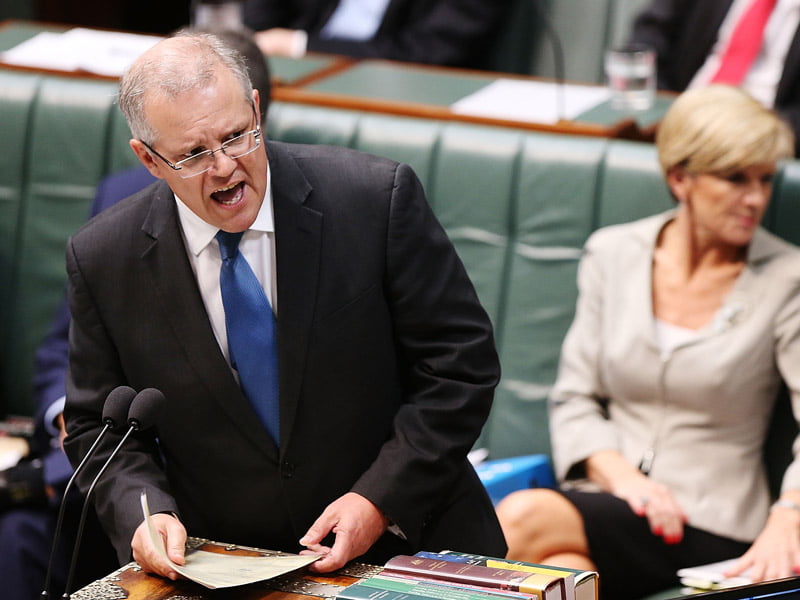There’s an increasingly disappointing air of predictability that is settling over Malcolm Turnbull’s National Innovation and Science Agenda.
And that, one would have thought, is quite the opposite to the core ideals of ‘innovation.’
The latest exhibit was the announcement late on Friday – usually a dead zone for any government or corporate press release – of China’s financial hub and biggest city Shanghai as the latest ‘landing pad’ in the innovation plan.

Shanghai joins the other two utterly unimaginative choices so far Silicon Valley and Tel Aviv. And we now have, at least under the original plans, two more to go.
One has to ask where is the imagination and the risk, and the shock of the new that should associated with innovation in the making of these choices?
The right place in China would have been Shenzhen, China’s true technology hub. Of course, there are a number of legitimate tech hubs across such a sprawling and populous country, but Shenzhen is its most important.
Shenzhen is also home to the embryonic financial services and fintech district of Qianhai.
But government has instead opted for built-in user friendliness, and the ease of Austrade’s China base – Shanghai.
The ‘landing pad’ choices so far also raise the questions of just what is their purpose? And who gets to use them? Anyone with an ABN?
As one venture capital insider put it to InnovationAus.com, the types of companies that experienced technology investors are interested in placing their money with are precisely those companies that don’t need a landing pads.
Investors want to put their funds with entrepreneurs who don’t need extra assist from governments, particularly in the form of a government-funded not-sure-what-it-is. But no-one wants to be publicly critical of the Agenda (at least at this stage.)
To quote the replicant Roy Batty in Blade Runner (as I often do): “questions, questions.”
What does the Australian government think it can provide in Silicon Valley, Israel or Shanghai that the vibrant tech sectors in those places cannot? Australian-ness? If so, that would seem to be counter-intuitive.
It’s worth mentioning here, once again, that the Agenda has put Australia’s bureaucratic, slow moving Austrade – an organisation with only the most limited track record in any part of the ICT sector, in change of the “pads.” And that is being nice.
Would it be churlish to note that Australia’s most recent technology success – New York-listed Atlassian, a company whose share price has managed to stay reasonably buoyant in face of deteriorating tech values across the US – didn’t need a ‘landing pad’? And even if one was available, would it have most likely spurned it?
One oddity in the Shanghai ‘landing pad’ announcement was that it was made by Treasurer Scott Morrison, together with the freshly-minted Trade Minister Steve Ciobo.
Yet there was the gaping lack of any involvement by the PM’s Innovation Dynamic Duo: that is, Cabinet’s Innovation and Science Minister Christopher Pyne and his assistant minister Wyatt Roy.
Perhaps they were busy rustling up another committee?
Mr Morrison, who had nil involvement in the original innovation announcement, is suddenly front and centre of this thing. Why?
One can’t help but think the Shanghai announcement was thrown together by the PMO to give him something to say at the G20 – and maybe even to try and distract people from the government’s problematic lack of a tax policy.
Ahead of his trip to Shanghai, Mr Morrison visited Hong Kong leading us neatly to Exhibit B. There he toured the Commonwealth Bank’s Innovation Centre.
Australians visiting Australian companies in the name of innovation. Safe. Easy. Predictable. But innovative.
And by the way for all the dreamy talk of making Australia the Asian FinTech leader it’s really all about Sydney. So the government should say so.
The two Sydney banks in Australia’s Four Pillars – the CBA and Westpac – both got guernseys, while the two Melbourne-based banks (ANZ, NAB) dipped out.
So did just about everyone else in Melbourne as the FinTech advisory panel is incredibly Sydney-heavy. Not really a problem, but it is certainly part of the fuzzy messaging that’s becoming the innovation hallmark.
Try this for size from the Treasurer: “FinTech is a pivot point of our alignment with the transitioning economies and our regional trading partners, especially China.”
Yeah, we don’t know what he means either. If anyone can tell us, please send it in on the back of a postcard.
But perhaps the piece de resistance was, Mr Morrison (aka Mr Fiscal Rectitude) blithely handing $150,000 of taxpayer money to Stone & Chalk, the well-funded FinTech accelerator already backed by the NSW government.
Stone & Chalk is not a startup, of course, and it already has the backing of the financial services establishment, so why the hand-out? And besides that, where’s the process? And why is the Treasurer handing it out?
This makes John Howard’s middle class welfare programs look positively left wing.
It looks all the world like its free cash for the government’s Sydney business mates. Surely that cannot be the case.
Tyro Fintech Hub, Australia’s original FinTech accelerator was set up in May 2015 and as its founder Andrew Corbett-Jones noted at the time: “Australia is late to the party, but the time has come for financial services to be disrupted and radically improved by a swarm of FinTech entrepreneurs.”
Boy does that make the government late.
Tyro, which was ahead of Stone & Chalk, should have every reason to be quite put out. But maybe it will be pleased it doesn’t have the taint of an unnecessary taxpayer freebie blotting its copybook.
Do you know more? Contact James Riley via Email.

